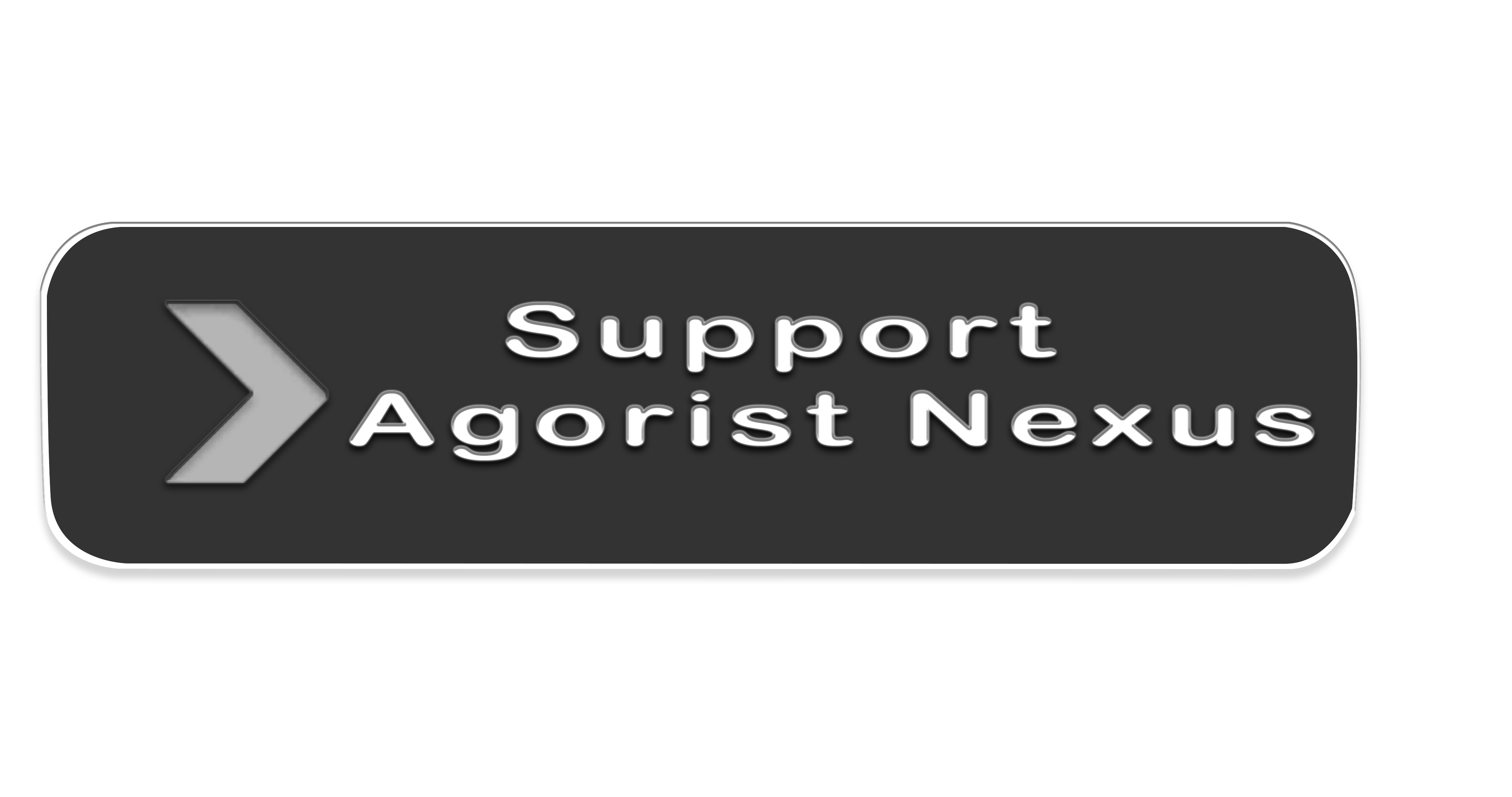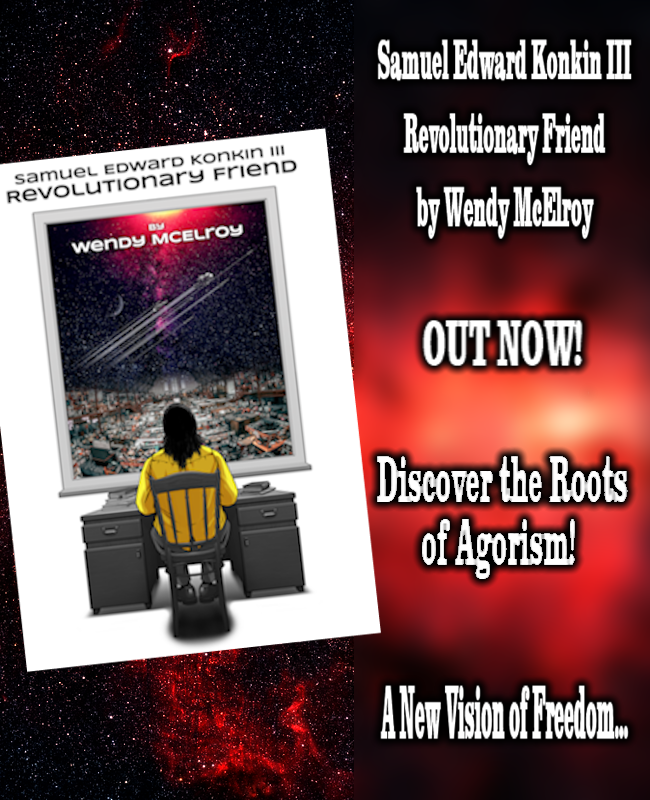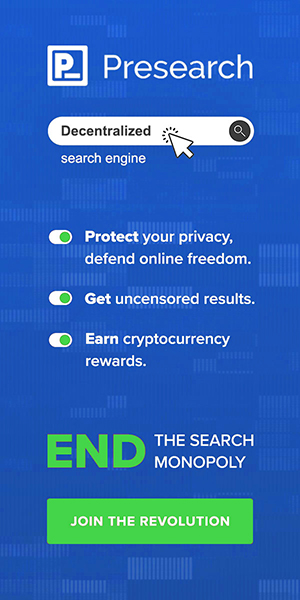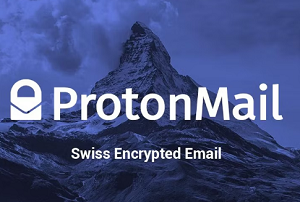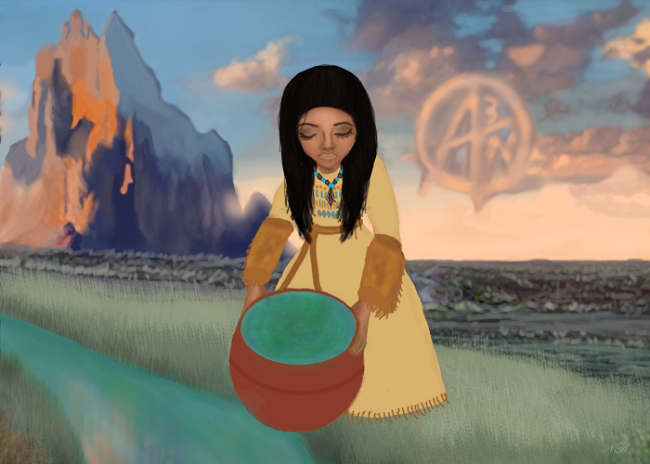
The Navajo And The Contaminated Water Problem
Introduction
A friend came to me and presented the problems the Navajo face and are going through. Much of the water they have is contaminated by uranium from abandoned uranium mines and the Church rock spill. Details on this later. This article is an attempt to bring awareness to as many people as possible and to show people the great Navajo, and the many solutions that agorism has to offer without sacrificing morality. In no way should this article, the political arguments or beliefs take away from the brave, never beaten, resilient, and courageous Navajo, who wake up every day in desolation with a willingness to fight and provide for their community despite the dire circumstances they face. To explain a solution to their water concerns, I must first start with property and ownership.
“Every man has a property in his own person. This nobody has any right to but himself. The labor of his body, and the work of his hands, we may say, are properly his.”
– John Locke
Property and Ownership
Property is defined as something that belongs to, or that someone owns. Ownership is the right to determine the disposition of the property in question. For example, the owner of a real estate property can decide whether to rent the property out, sell or live in said property. “Public property” is an anti-concept overall.
On Ownership,
“Ownership is a moral condition in which the moral agent (person) has the right to determine the disposition of the property in question. This moral condition arises through the mixing of one’s labor with that which is unowned, else through voluntary exchange with other owners of property. The moral condition exists because you have exclusive right to your own labor, and once mixed with that which is unowned exclusive right to that property in turn.
The only limit on this is that though you own property you cannot morally use it to harm innocent others.”
-Storm Delagora
Note – what he means by the only limits on this is that though you own property you cannot morally use it to harm innocent others. For example, someone burning large amounts of waste polluting their neighbors air, violating their property rights.
Private Property vs Public Property [Practical concerns]
Private property is essential to a prosperous society, because ownership allows one to properly decide how to utilize land according to their desires and best interest. A caretaker is incentivized to maintain and improve the property. It is in this manner that farmers take care of the land in ways that increase yields the following year. When property is “public”, the general public is the owner. So that means you are part owner of “public property”. As part owner of “public property” you have a right to determine the disposition of the property. How did “shared ownership” work historically?
The Plymouth pilgrims shared the land, work and crops. Meaning mostly everything was public property. This created a tragedy of the commons situation in which everyone owned and shared the resources of the land. They “shared” the land but since no one owned it there wasn’t personal incentive to maintain and improve it.
For example, everyone sharing the same cow pasture meant there was an incentive to graze as many cattle on as much of the land as possible, because if you didn’t it would all be gone. This destroyed the land, making it almost completely unusable the following year. The results when work and crops are divided equally are not any better. Why work when someone else will do it for you, while receiving the same amount of benefit regardless? Of what crops there were, many were stolen and picked early.
The Plymouth pilgrims had many hardships and no incentives to upkeep any land. Many were noted to have faked illnesses instead of working the common property. After years of suffering they implemented private property rights. They were able to produce on land they owned, kept the fruits of their labor and increased food yields for following years. They worked hard because they’d be rewarded for the results. Getting rid of own-all-share-all and implementing private property rights is why we celebrate Thanksgiving today. Private property allowed them to become so prosperous that they were able to give thanks, share with one another and feast on the fruits of their labor.
Public Property
“Can the collective have ownership?
As ownership is a relationship between the moral agent and his/her labor, ownership is a trait that can only apply individually. There is no actual entity “the collective,” rather this serves as a mere description of a group of individuals. While individuals obviously have the traits of moral agents, including that of ownership, the group cannot. Furthermore since ownership is the right to determine the disposition of property, there can be no collective ownership. If one individual must seek permission of all others, or of any other, in order to determine the disposition of the property then clearly that person does not have ownership over the property in question. They are not determining the disposition, but rather have to consult others to determine the disposition. In principle this differs very little from asking the owner of a shovel if you can use it. You are not determining the disposition, the owner is. The difference is with the collective there simply is no owner.
When someone uses the term “public property” at best this is an euphemism. Since there is no such thing as collective ownership, there cannot be “public” ownership. This means of course that the state cannot own property. The state cannot have a moral claim to any property since the state is not itself a moral agent.”
-Storm Delagora
Public Property and Common Ownership
Since you are part owner of “public property”, you should be able to do whatever you want with said “public property”. What about the other “owners”? If everyone owns it then no one does, and why does only the government get to decide what is done with the public property in question and not the people that actually contributed their labor towards it, and the maintenance thereof?
In the end the people actually have more legitimate say over “public property” than government. This is why I have no issues with people using public property as they see fit. Other people may not like that, but they themselves can fix it or change it to their liking. Everyone owns it and has a right to it. This is also why it is not immoral to do gardening on public land, permanently camp or stay on public campgrounds — individuals have a right to do so since they are part owners. However, this is not a system I would want to ever live in or endorse. In an agorist society, all property would be private and private property rights would be respected via voluntary relations.
The Agorist Equation
As agorists we do things we know are right and just, even if most of society does not see things that way. Agorists can utilize public property and are justified in doing so because it is unowned and we are free to mix our labor with it. This opens the door to many opportunities. Harvesting resources on public land, hunting on public lands and much more. Through public property we can use these resources to voluntarily trade with one another while delegitimizing the state simultaneously. We can also offer other agorists bargains that they would not be able to get elsewhere, strengthening the agorist community. We can even right wrongs and truly help people, as will be demonstrated in the next section.
An Application of This Agorist Approach to the Contaminated Water Problem
The average household water use in the U.S. is about 80-100 gallons each day. Forty percent of Navajo Nation households haul water for domestic use, and live off of as little as 10 gallons a day. The reason is that much of the Navajo groundwater is contaminated with uranium. The Atomic Energy Commission (AEC) bought uranium here for the Manhattan Project in 1944 and ramped up production for the cold war. The AEC along with private companies disregarded known health risks and exposure to uranium and failed to inform the Navajo workers who were exposed.
The U.S Public Health Service in 1951 did human testing experiments on the Navajo miners without their consent, to study the long term health effects of radiation poisoning. Families that grew up around the mines had children who would play in the contaminated waters unknowing of the dangers that lurked within. Many Navajo unwittingly let their livestock drink from contaminated ponds and pools. Some families built homes out of uranium, all this causing a plethora of health problems and cancer related deaths that could have easily been avoided with simple information that the government had and denied them of.
The companies later abandoned the mines without cleanup, knowing the ill effects of uranium on human health. Today there are over 500 abandoned uranium mines in the Navajo Nation. The last mine closed operations in 1986. In a 2010 article Don Yellowman, president of Forgotten People said: “It seems like everyone’s aware but nobody’s taking notice. We don’t understand.”
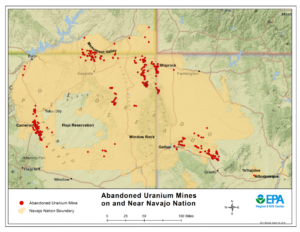
The Church Rock uranium mill spill under the United Nuclear Corporation that occurred on July 16, 1979 still haunts the Navajo to this day, and radioactive waste still contaminates the land and water. It remains the largest release of radioactive material in U.S. history. The spill breached a dam releasing more than 1,000 tons of solid radioactive mill waste and 94 million gallons of acidic, radioactive tailings solution into the Puerco River which flowed through to the city of Gallup NM. The governor of New Mexico, Bruce King, refused the Navajo nation’s request that the site be declared a federal disaster area.
To make matters worse, in 2015 the EPA spilled over 3 million gallons of heavy metal sludge containing lead and arsenic in the Animas River between Silverton and Durango turning the river a vile yellow shade. The toxic sludge eventually merged into the San Juan river which flows through Navajo nation. It is reported that the EPA claimed responsibility and did not follow a plethora of protocols and was extremely incompetent. New Mexico and the Navajo are still having problems in the aftermath of the Gold King Mine spill to this day. The Navajo can’t get groundwater because it could possibly be contaminated by uranium and they can’t use the San Juan River because of a lead and arsenic Gold King Mine spill by the EPA.
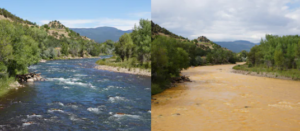
The EPA polluting the San Juan River was a devastating blow to the livelihood of the Navajo. This river was vital to livestock and irrigation. To this day the problem with the San Juan river persists, and San Juan county residents still won’t purchase crops from the Navajo due to the stigma of the yellow river 5 years back and questionable water quality.
An Agorist Solution?
Agorism is a practical and principled solution for the severe water shortage of the Navajo nation. Freshwater could be freely taken from Lake Powell right outside the Navajo nation because it is “public land” . If water can be taken from a clean public lake nearby, and given to the Navajo who are desperate for water and victims of countless years of government atrocities, this would be an extremely small amount of much needed rectification. Also drilling for clean water where government regulations restrict it. Ending the water shortage for the Navajo should be a priority for an incompetent government who clearly does not care about them and has proven this time and time again. By utilizing the unowned land (Lake Powell) we could relieve some of the daily hardships and suffering of the many Navajo who struggle only surviving on 10 gallons of water a day. Through rightful use of unowned land, AKA “ public property”, and voluntary human interaction we can find solutions to problems that are not only not solved by government, but are in fact created by government.
“May our rights, sovereignty, wealth, dignity, pride and health be forever restored. And may generations to come remember the many injustices we have suffered as our names, homes, families, land, food, freedom were stolen, and the lies that were told.” – Unknown
